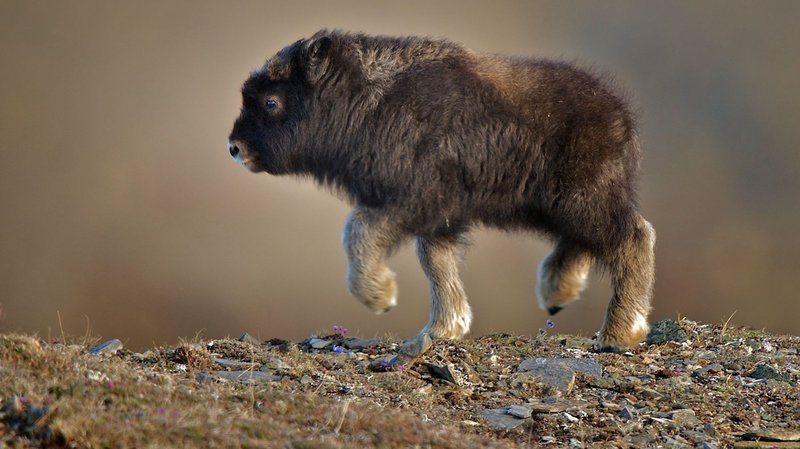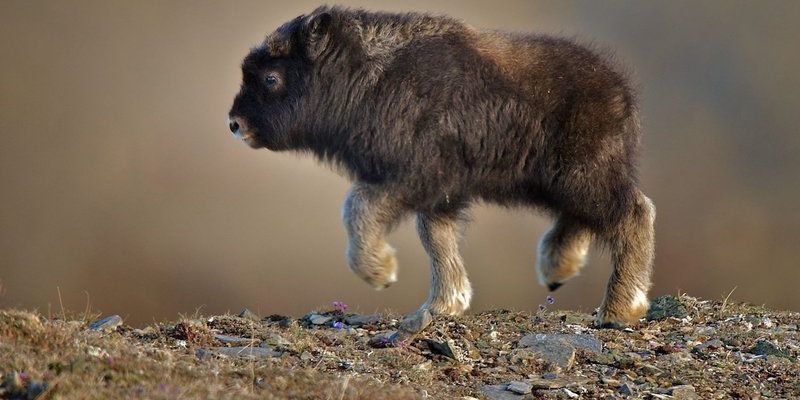
Encountering a muskox in the wild can be a thrilling experience, but it’s important to approach it with caution and respect. Rather than relying solely on instinct, you can take a few key steps to ensure a safe and enjoyable encounter. Let’s talk about how to handle such a situation, ensuring both you and the muskox remain safe and calm.
Understanding the Muskox
Before diving into what to do if you see a muskox, let’s take a moment to appreciate what these creatures are all about. Muskoxen are large, shaggy animals native to the Arctic regions. They can weigh up to 800 pounds and stand about 4 feet tall at the shoulder. Think of them as living woolly tanks, perfectly adapted to survive in some of the harshest climates on Earth.
These gentle giants have a unique social structure. Muskoxen often travel in groups, called herds, which can range from a few individuals to over a dozen. They rely on each other for protection, typically forming a circle around their young when threatened. So, if you stumble upon them, remember, you’re not just seeing one muskox; you’re witnessing a fascinating social dynamic unfold.
Stay Calm and Assess the Situation
If you encounter a muskox, the first thing to do is to stay calm. It’s totally normal to feel a rush of excitement or apprehension, but keeping your cool is crucial. Take a deep breath and assess the situation—how close are you to the animal? Is it grazing peacefully, or does it seem on high alert?
Remember that muskoxen, while generally docile, can become aggressive if they feel threatened. If you notice signs of agitation, like head-bobbing or snorting, it’s best to keep your distance. Here’s the thing: you’re a visitor in their world. Give them space to feel comfortable, much like you would want in a crowded area.
Back Away Slowly
If you find yourself too close for comfort, don’t panic! Move back slowly and quietly. Quick movements might startle the muskox and lead it to feel cornered. Instead, take tiny steps backward while keeping your eyes on the animal. You don’t want to turn your back on it, as that might send the wrong message.
Focus on your surroundings as you back away. Make sure you’re not walking directly into another animal or an obstacle. Keeping your distance ensures that both you and the muskox feel safe and can go about your day without stress.
Know When to Leave the Area
Sometimes, the best option is to just leave. If the muskox appears agitated or you notice it trying to move towards you, it’s a clear sign to exit the scene. Trust your instincts here—if it doesn’t feel right, it probably isn’t.
Leave the area calmly and quietly, avoiding any sudden movements. You might be wondering if there are specific signs to watch for. Look for behaviors like the following:
- Head lowered and horns pointed towards you
- Snorting or vocalizing
- Attempting to charge or move directly towards you
If you see any of these, it’s time to step away and give the muskox space.
Capture the Moment—From a Safe Distance
If the muskox seems calm and you’re at a safe distance, it can be a fantastic opportunity to take a few photos. Just remember, safety first! Use a zoom lens so you can capture its beauty without getting too close. This is a moment worth cherishing, and you’ll want to remember the experience without endangering yourself or the animal.
While you’re photographing, keep your voice low and move slowly. Sudden noises or movements could startle the muskox and potentially change its behavior, possibly making it feel threatened. Think of it as a delicate dance—both of you are navigating the same space, and respect is key.
Educate Yourself Beforehand
If you plan to explore areas where muskoxen are known to roam, it’s wise to do a little homework beforehand. Learning about their behavior, habitats, and the best practices for encounters can greatly enhance your experience. Here’s why this matters: understanding these creatures fosters respect and ensures everyone’s safety, both for you and the muskox.
You might even want to join guided tours or expeditions led by experts. These guides have experience in handling muskox encounters and can provide valuable insights. Plus, being in a group often gives you an extra layer of safety. Think of it as traveling with friends—always better and more fun!
Possible Hazards in Muskox Country
When you’re in muskox territory, it’s not just the animals you need to consider. The weather and terrain can also pose challenges. For instance, those remote, rugged landscapes can be tricky to navigate. If you’re trekking in the Arctic, prepare for sudden weather changes and dress accordingly. Layering is key—just like when you’re gearing up for an outdoor adventure.
Stay aware of your surroundings and keep an eye out for other wildlife or potential hazards, like steep cliffs or unstable ground. Just like if you were troubleshooting a remote control—sometimes you need to pause and reassess to avoid a jam.
Traveling in Pack
Whenever possible, travel with a companion or as part of a group. Having others with you can act as a human safety net, and you’ll have someone to share those beautiful moments with. Plus, with multiple eyes scanning the environment, you’re less likely to miss any signs of wildlife or hazards in the area.
Respecting Wildlife and Nature
Ultimately, the goal of your encounter is to appreciate these magnificent animals while ensuring their safety and your own. Wildlife encounters can teach us valuable lessons about coexistence. Treat the muskox as you would want to be treated: with kindness, respect, and understanding.
Remember, these animals are part of a delicate ecosystem, and human interaction can significantly impact their behavior and habitat. By making informed choices and showing respect, you can enjoy the thrill of the encounter while helping protect the natural world.
In conclusion, encountering a muskox in the wild can be a truly magical experience if approached correctly. Keep calm, respect their space, and always prioritize safety—yours and theirs. So, the next time you find yourself in muskox territory, you’ll be well-equipped to appreciate these incredible animals without compromising their well-being. Happy exploring!

